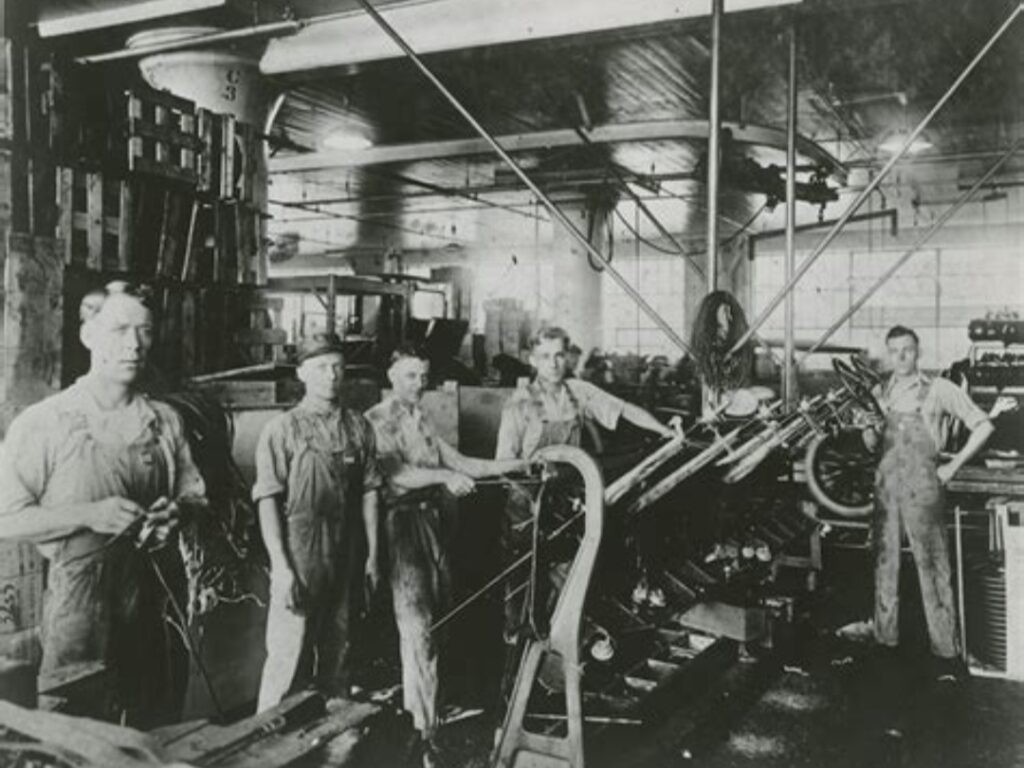The new American tariffs resemble those of President Herbert Hoover in the 1930s, which helped plunge the world into the Great Depression. Economists and historians consider them one of the greatest blunders in history. Trump does not.

Ben Stein is the most famous economics teacher in American film history thanks to Hollywood. He played the role of the dreadfully boring teacher in the 1986 movie Ferris Bueller’s Day Off. In a monotone voice, he attempts to explain the Smoot-Hawley Tariff Act, which was signed on June 17, 1930—eight months after the Wall Street crash of October 1929—by then-President Herbert Hoover.
On that “Liberation Day,” import tariffs were imposed on 20,000 goods from other countries in an attempt to protect domestic agriculture and industry from “unfair foreign competition.”
Stein can’t hold the students’ attention. By repeatedly asking, “Anyone? Anyone?”, he tries in vain to involve them. The film became a huge success.
Japan
When Wall Street experienced a crash on Black Monday, October 19, 1987—an even worse drop than Black Thursday in 1929—then-President Ronald Reagan decided to do absolutely nothing. As a neoliberal, free trade was sacred to him, even though the U.S. faced massive trade deficits at the time. China wasn’t the main culprit back then—Japan was, with its Datsuns, Toyotas, and products from Sony and Panasonic.
Barely a year later, the markets had recovered. World trade and the global economy would experience an unprecedented boom in the 1990s thanks to globalization and digitalization. After the credit crisis in 2008, the world’s major industrial nations—now united in the G20—decided not to worsen the looming recession and unemployment with protectionist measures.
Economists and historians consider Smoot-Hawley one of the greatest policy blunders in global history. Trump does not. The comparison is inevitable. Just like in 1930, the Republicans now control both the White House and Congress. And just as we are now in the midst of a technological revolution driven by social media and artificial intelligence, the 1930s were marked by one as well—leading to the loss of many “well-paid jobs” in agriculture and craftsmanship.
‘Economic stupidity’
Thanks to the gasoline engine and electricity, the 1920s saw a massive increase in productivity. In rural areas, draft and work animals were replaced by tractors and trucks. Land previously needed for grazing could now be used for production.
Like Trump, Hoover called the tariffs countermeasures. By the late 1920s, France had imposed 100 percent tariffs on American cars like the famous Model T. Italy and Germany had restricted imports of American grain. In 1928, Hoover won the presidential election with a promise to protect American jobs—just like Trump did last year.
Nevertheless, there was significant opposition to Smoot-Hawley. In May 1930, 1,028 leading economists signed a petition urging Hoover to veto the law. Automobile magnate Henry Ford called it “economic stupidity.” JP Morgan CEO Thomas Lamont said he “begged Hoover on his knees not to go through with the plan.”
Two-thirds untaxed
But Hoover stuck to his “beggar-thy-neighbor” strategy: improving one’s own economy at the expense of others by creating trade barriers. U.S. trade partners retaliated. Canada was the first to impose tariffs on sixteen key American products, which together accounted for 30 percent of total U.S. exports to the country.
American exports to countries that responded—among them Canada, France, Cuba, Mexico, Spain, Argentina, and Switzerland—fell by 31 percent. In the following years, the highest tariffs rose to nearly 60 percent on some products. But unlike now, two-thirds of imports remained untaxed. Trump’s tariffs apply to all imports.
Weak financial system
World trade collapsed in less than four years. U.S. imports dropped 66 percent, from $4.4 billion in 1929 to $1.5 billion in 1933. Exports fell from $5.4 billion to $2.1 billion. GDP was cut in half, from $103 billion in 1929 to $55.6 billion in 1933. Unemployment rose from 8 percent in 1930 to 25 percent in 1933.
Not everyone blames Smoot-Hawley for that. According to monetarists like Milton Friedman, the weak U.S. financial system was more to blame for the Great Depression than protectionism—after the crash, 9,000 of the 25,000 banks failed. In 1930, trade only accounted for 5 percent of U.S. GDP. Today, it’s 25 percent.
‘Never again’
Regardless, it was a vital lesson. After World War II, Western nations made massive agreements under the motto: never again. Organizations were created to promote free trade. In 1947, GATT (the General Agreement on Tariffs and Trade) came into effect, gradually reducing import barriers.
Whether Trump has seen Ferris Bueller’s Day Off is unknown. He may have fallen asleep. Either way, he shows no regard for the fact that after Smoot-Hawley, the Great Depression followed—a prelude to another world war.


Trump single-handedly destroyed the Republican Party this week. His MAGA electorate is the one being hit hardest by this economic policy. Next year, the GOP will be crushed and it will take decades for it to recover.